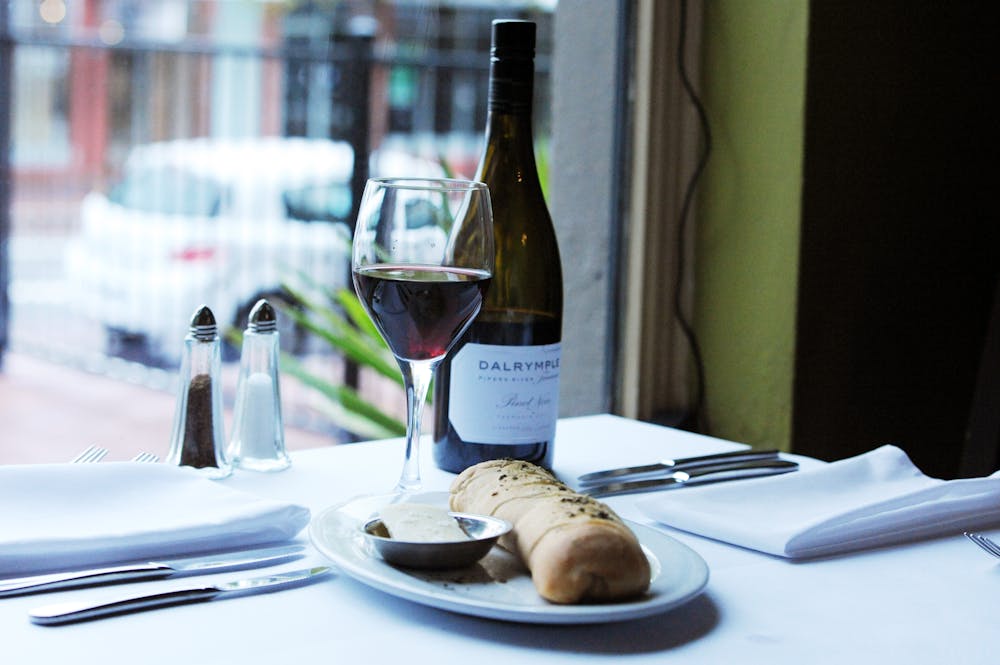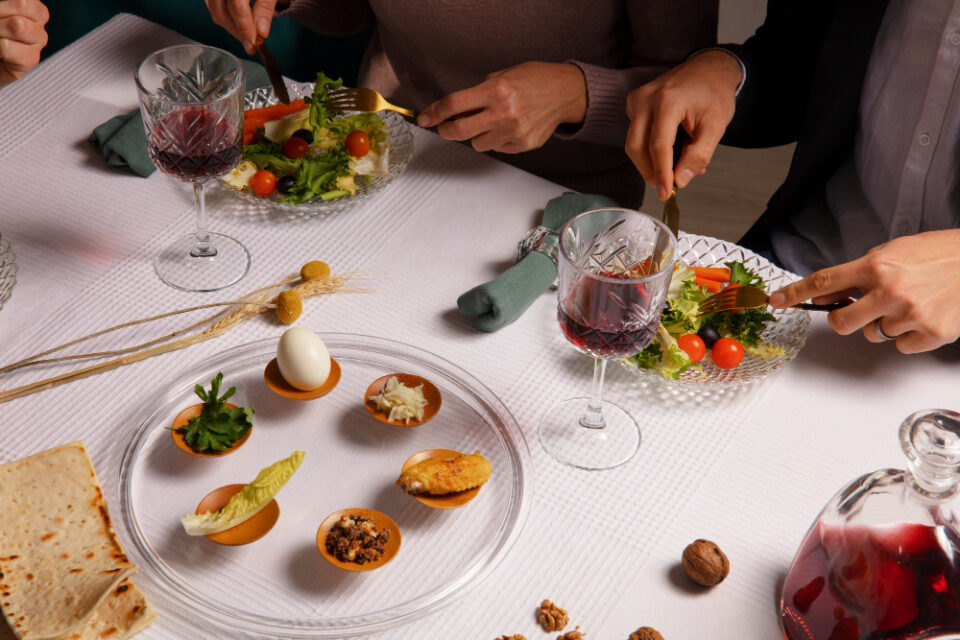Ever wondered what makes a winery lunch in the Yarra Valley so special? Why do food and wine enthusiasts from across Australia and beyond flock to this stunning region just an hour from Melbourne? And how can you make sure your next visit becomes an unforgettable culinary adventure?
The Yarra Valley has earned its reputation as Australia’s premier wine and dining destination through a perfect combination of world-class wines, exceptional cuisine, and breathtaking scenery. This guide reveals the insider secrets to creating your own perfect winery lunch experience, from choosing the right venue to mastering wine pairings and navigating transport options.

Whether you’re planning a romantic getaway, celebrating a milestone, or simply treating yourself to a memorable day out, you’ll discover everything you need to know about making the most of your Yarra Valley winery lunch. We’ll explore the best times to visit, share money-saving tips, and uncover hidden gems that even locals rave about.
Planning Your Perfect Winery Lunch
When is the Best Time to Visit Yarra Valley Wineries?
The beauty of the Yarra Valley lies in its year-round appeal, but each season offers a distinctly different experience. Autumn (March to May) stands out as the most magical time, when the vineyards transform into a patchwork of gold and crimson. The weather remains mild, harvest season brings a special energy to the wineries, and you’ll often find seasonal menu items featuring freshly picked produce.
Spring (September to November) runs a close second, with the valley bursting into life as new growth appears on the vines. The weather can be slightly unpredictable, but sunny spring days create perfect conditions for alfresco dining. Summer brings warm weather ideal for outdoor lunches, though popular venues can get crowded, especially during weekends and school holidays.
Winter might seem less appealing, but savvy visitors know this is when you’ll find the most intimate experiences. Many wineries create cosy indoor settings with roaring fires, hearty seasonal menus, and special wine releases. Plus, you’ll often have the place almost to yourself on quieter weekdays.
How Far in Advance Should You Book a Winery Lunch?
Timing your booking right can make the difference between securing a prime table with vineyard views and missing out entirely. For weekend visits during peak seasons (autumn and spring), booking 2-3 weeks ahead is essential at popular establishments. Some highly sought-after restaurants at boutique wineries may require bookings up to a month in advance, particularly for special occasions.
Weekday bookings offer much more flexibility, often allowing reservations just a few days ahead. However, if you’re planning a group booking or have specific dietary requirements, giving the venue at least a week’s notice ensures they can accommodate your needs properly.
Keep in mind that many smaller wineries operate with limited dining days, sometimes only opening their restaurants Thursday through Sunday. Always check operating hours and book directly through the winery’s website when possible, as this often provides access to exclusive dining packages or seasonal promotions.
Weekday vs Weekend: Which Offers a Better Experience?
The eternal debate between weekday and weekend visits ultimately comes down to what you’re seeking from your winery lunch experience. Weekdays deliver a more relaxed, intimate atmosphere where you can truly savour the pace of wine country life. Staff have more time to share their knowledge, you won’t feel rushed, and parking is never an issue.
Weekend visits bring their own charm, with a livelier atmosphere and often special events or live music. Many wineries showcase their best offerings on weekends, including chef’s special menus or exclusive wine tastings. The social buzz can add to the experience, especially if you enjoy meeting fellow wine enthusiasts.
Consider that weekday visits often come with perks like complimentary tastings, upgrade offers, or access to areas usually reserved for private events. The trade-off? Some smaller wineries might have reduced menus or limited cellar door hours during quieter periods.
Choosing the Right Winery for Your Lunch Experience
What Makes a Great Winery Restaurant?
A truly exceptional winery restaurant goes beyond just good food and wine – it creates an experience that engages all your senses. The best venues understand that diners are seeking a connection to the land, showcasing not just their wines but the entire ethos of their estate. Look for restaurants that emphasise seasonal, locally-sourced ingredients, often grown right on the property or sourced from neighbouring farms.
The synergy between the kitchen and cellar door sets great winery restaurants apart. When the chef and winemaker work in harmony, creating dishes specifically designed to complement the estate’s wines, magic happens on your plate. You’ll notice this attention to detail in seemingly simple touches, like bread made with spent grain from the winemaking process or desserts incorporating wine reductions.
Ambience plays a crucial role too. Whether it’s floor-to-ceiling windows framing vineyard views, outdoor terraces that put you amongst the vines, or restored heritage buildings that tell the property’s story, the setting should transport you from everyday life into the heart of wine country.
Estate-Grown vs Guest Chef Experiences
The Yarra Valley offers two distinct dining philosophies, each with its own appeal. Estate-grown experiences pride themselves on complete paddock-to-plate integration, where virtually everything on your plate comes from the property or immediate surrounds. These venues often feature smaller, frequently changing menus that reflect what’s literally growing outside the window.
Guest chef experiences bring metropolitan culinary talent to the valley, often resulting in more adventurous menus and cutting-edge techniques. These collaborations can produce extraordinary results, combining world-class culinary expertise with premium local ingredients. Some wineries rotate guest chefs seasonally, keeping their offerings fresh and exciting.
Both approaches have merit, and your choice might depend on your mood and preferences. Estate-grown restaurants offer authenticity and a true taste of place, while guest chef venues might satisfy those seeking more contemporary or international flavours. Many successful wineries now blend both approaches, maintaining a core estate-focused menu while hosting special guest chef events throughout the year.
Family-Friendly vs Adults-Only Venues
Navigating the family-friendly landscape of Yarra Valley wineries requires understanding that policies vary significantly between venues. Some wineries warmly welcome families, offering children’s menus, spacious lawns for kids to explore, and even dedicated play areas. These venues often feature more casual dining options alongside their fine dining restaurants, making them perfect for multi-generational gatherings.
Adults-only venues create a different atmosphere entirely, focusing on romantic settings and sophisticated dining experiences. These establishments might restrict access to certain areas or implement age limits during peak times. While this might limit options for families, it ensures a peaceful environment for couples and groups seeking a more refined experience.
The key is matching the venue to your group’s needs. Family-friendly doesn’t mean compromising on quality – many top-tier wineries successfully cater to both markets by offering separate spaces or time-based policies. Always check ahead, as policies can change seasonally or for special events.
Views, Ambience, and Setting: What to Look For
The Yarra Valley’s natural beauty provides a stunning backdrop for any meal, but the best winery restaurants know how to maximise their settings. Elevated positions offering panoramic valley views create that instagram-worthy moment, while restaurants nestled amongst the vines provide an intimate connection to the terroir. Some properties feature restored historical buildings that add character and storytelling to your dining experience.
Consider the time of day when evaluating settings. Morning light creates a completely different atmosphere than the golden hour before sunset. West-facing terraces might be uncomfortably hot during summer lunches but perfect for autumn afternoons. Similarly, indoor spaces with large fireplaces that seem excessive in summer become irresistibly cozy during winter visits.
Weather contingencies matter too. The best venues seamlessly transition between indoor and outdoor spaces, ensuring your experience isn’t dampened by unexpected weather changes. Look for restaurants with covered terraces, retractable walls, or multiple dining spaces that allow flexibility without compromising ambience.
The Ultimate Yarra Valley Wine and Food Pairing Guide
Which Wines Pair Best with Local Produce?
The Yarra Valley’s cool climate produces elegant wines that naturally complement the region’s fresh, seasonal produce. Chardonnay, one of the valley’s flagship varieties, pairs brilliantly with locally-sourced seafood, creamy cheeses from nearby dairies, and dishes featuring the region’s abundant mushrooms. The valley’s refined style of Chardonnay, often showing restraint with oak, allows the natural flavours of food to shine through.
Pinot Noir, the valley’s other signature grape, creates magical pairings with everything from duck and game meats to earthy vegetable dishes featuring beetroot or Swiss chard from local farms. The wine’s natural acidity and delicate tannins make it surprisingly versatile, even working well with salmon or tuna preparations that would overpower heavier reds.
Don’t overlook the valley’s excellent cool-climate Syrah (Shiraz), which offers a more refined alternative to its warmer climate cousins. These wines, with their peppery notes and medium body, pair wonderfully with lamb from local producers or charcuterie plates featuring regional smallgoods. The key is embracing the valley’s strength in producing wines with finesse rather than power.
Seasonal Menu Highlights Throughout the Year
Each season brings its own treasures to Yarra Valley winery menus, reflecting the region’s commitment to seasonal dining. Autumn showcases wild mushrooms, freshly pressed olive oils, and the last of summer’s tomatoes transformed into rich, warming dishes. Chestnuts from nearby Wandin make appearances in both savoury and sweet preparations.
Winter menus embrace comfort without sacrificing sophistication. Think slow-braised beef cheeks with local red wine reductions, truffle-infused dishes when these prized fungi are in season, and robust soups featuring vegetables from kitchen gardens. Many wineries offer special winter lunch packages that include wine tastings by the fireplace.
Spring and summer bring lighter fare – salads featuring just-picked greens, stone fruits in both savoury and sweet applications, and an abundance of fresh herbs that brighten every dish. Berry season in summer sees local strawberries, raspberries, and blackberries starring in desserts, often paired with dessert wines or sparkling options.
Vegetarian and Dietary Options at Yarra Valley Wineries
Gone are the days when vegetarian options meant a sad salad or pasta as an afterthought. Leading Yarra Valley winery restaurants now create plant-based dishes that celebrate local produce with as much creativity as their meat-centric counterparts. Many venues maintain relationships with local organic farms, ensuring vegetarian dishes burst with flavour and seasonal variety.
Dietary requirements receive serious attention across the valley, with most establishments able to accommodate gluten-free, vegan, and other special dietary needs with advance notice. Some wineries have gone further, creating entirely separate vegan tasting menus that pair specially selected wines with plant-based courses.
The wine side presents no problems for vegetarians and vegans, as most Yarra Valley producers use minimal intervention winemaking techniques. Many are happy to discuss their fining processes for those with strict dietary requirements, and several producers specifically label vegan-friendly wines.
Conclusion
Your perfect Yarra Valley winery lunch awaits, shaped by the choices you make and the experiences you prioritise. Throughout this guide, we’ve explored the many facets that contribute to an exceptional dining experience – from selecting the ideal season and venue to understanding wine pairings and managing logistics. The valley’s magic lies not in any single element but in how these components combine to create moments you’ll treasure long after the last glass is emptied.

